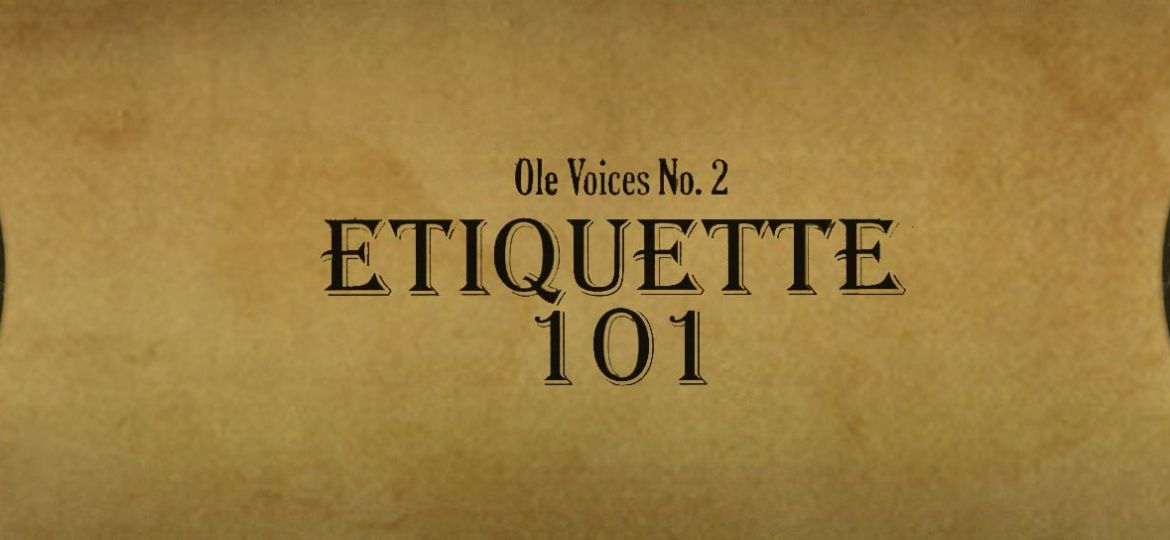
Although St. Olaf College has been a coeducational institution since its founding in 1874, its policies did not reflect its progressive beginning. In both official and unofficial capacities, the St. Olaf administration prescribed different rules for its male and female students.
In the early days of the college, professors at St. Olaf saw themselves as “moral guardians” for their students and made rules with this charge in mind. Professor Halvor T. Ytterboe recorded a set of guidelines on proper manners for his time at Olaf in the late 1800s – recently revised and compiled into the short book “Ole Voices No. 2: Etiquette 101” by College Archivist Jeff Sauve.
Although some rules applied to everyone on campus, Ytterboe felt it necessary to divide certain rules into gendered categories.
In the section “Rules for Boys,” Ytterboe insists that a male student with proper decorum is still “just as manly, just as full of fun, just as fond of sport” as any other boy. Some highlights of these “Rules for Boys” include Rule 87: “Don’t walk in the trough [the Main gutters]” and Rule 88: “Don’t throw water or anything out of windows.”
In his “Rules for Girls,” Ytterboe reminds female students of campus-wide policies about relations with the opposite sex. There is no riding or boating together, and “evening association is forbidden.” Boys are not permitted to take girls out on Sundays – not even to church.
Ytterboe asks female students not to read novels: “Good novels are good things, but how can women hope to occupy an equal place with men if their intellectual life is given over to one branch of literature solely?”
Girls also should not “affect merriment” when they feel none, or use slang words – those “coarse and fast terms” – and thus give into the “vulgar fashion of the time.”
The official rules for women were perhaps even more strict. During the 1909-10 academic year, women were supervised by a “preceptress” and consulted with her about nearly every aspect of their lives. They needed special permission to be absent from their rooms in the evening, to attend social affairs outside of the college and to go riding or boating.
In 1919, women could receive gentleman callers until 7:15 p.m. on weeknights and until 9:30 p.m. on Saturday and Sunday.
In 1931, the college decided that “smoking on the part of the women students is contrary to the standards of St. Olaf College, and therefore not permitted.” Men were still allowed to smoke.
Thora Phelps ’47 recalled the Norway Valley and the Ole Store as “favorite smoking spots for women.” She also recalled how female students had to have their lights out by 10 p.m. and the “just females” parties [on campus] after lights out. These were “more fun” because they were against the rules.
This lights-out rule did not apply to men, but Phelps suspects this was because most of the men were older than the women in the years immediately following World War II.
St. Olaf students circumvented other campus rules such as the infamous Footloose-style ban on dancing until 1961. Carol V. Johnson ’54 remembers how students would go to dances at Carleton College and Gertrude M. Hilleboe, the Dean of Women, knew exactly what was going on but did nothing to stop them.
A blurb from a Manitou Messenger article in 1964 quips, “a great advance in the Machine Age – computers, satellites and now, women smoking at St. Olaf.” Ironically, 1964 was also the year when the US Surgeon General issued a warning about the dangers of smoking.
The 1960s also saw changes in residence life regulations. In the early 1960s, first years were allowed to stay out until 10:15 pm and upperclassmen until 10:30 pm on weeknights and Sundays. On Saturdays, first years could stay out until 11:30 p.m. and everyone else could stay out until midnight.
Susan Hvistendahl ’68 recalled how men would give their dates a rose for every minute they kept them out past midnight. Cheeky Carls would sometimes substitute the flowers with Four Roses whiskey.
In 1967 dorm hours were “liberalized” for all and eliminated for seniors. The following year, women and men could finally visit the rooms of students of the opposite sex.
St. Olaf decided it was ready to try co-ed housing on alternate floors in 1971. That trial clearly went well. St. Olaf made all dorms co-ed in 1987, and they have remained so ever since.
What will be the next revolution in gendered rules at St. Olaf? On campus gender neutral housing options available to all? An easier process for changing your name in campus records? Only time can tell, but it’s certain that students will find ways to work around these policies before they change officially.

